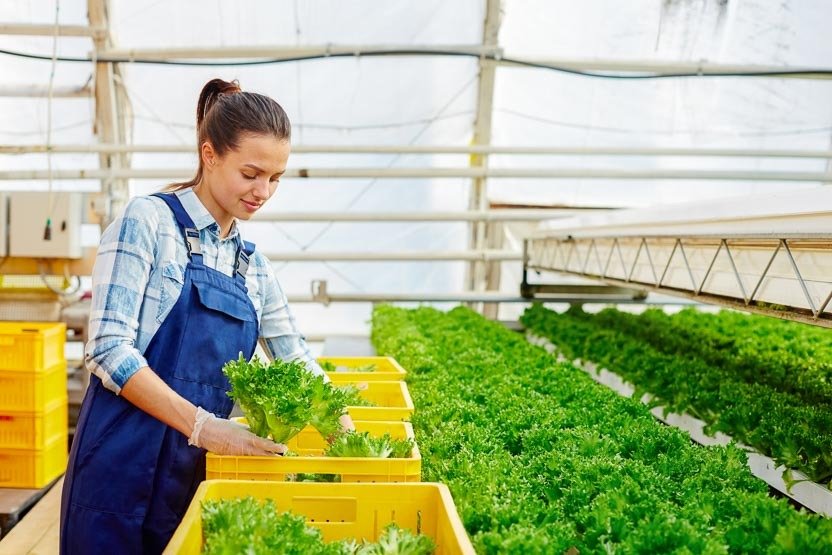In agriculture, new ideas are needed to keep up with the growing demand for sustainable food output. Among the many advancements shaping modern farming practices, plastic growing containers stand out as a revolutionary tool driving efficiency, productivity, and sustainability in agriculture. These versatile containers have transformed the way crops are grown, offering a range of benefits that traditional methods struggle to match. In this article, we delve into the plastic revolution in agriculture, exploring how plastic-growing containers are reshaping the landscape of farming and contributing to a more sustainable future.
Introduction To Plastic Growing Containers
Plastic growing containers, often in the form of pots, trays, or bags, have gained popularity in agricultural practices worldwide. These containers provide a controlled environment for plant growth, offering numerous advantages over conventional methods. Made from durable materials such as polyethylene or polypropylene, plastic containers are lightweight, portable, and customizable, making them ideal for various crops and cultivation environments.
Enhanced Plant Growth And Yield
One of the primary benefits of plastic growing containers is their ability to promote optimal plant growth and higher yields. Unlike traditional soil-based cultivation, plastic containers allow growers to precisely control factors such as soil composition, moisture levels, and nutrient availability. This level of control minimizes the risk of nutrient deficiencies and water stress, resulting in healthier plants with increased vigor and productivity. Additionally, the improved aeration and drainage provided by plastic containers contribute to root development, further enhancing overall crop yield.
Water Conservation And Efficiency
In places where water is scarce or there is a drought, managing water well is essential for agriculture to last. Plastic growing containers offer significant advantages in water conservation compared to traditional soil-based methods. By utilizing drip irrigation systems and implementing water-saving techniques such as mulching and hydrogel application, growers can minimize water wastage and optimize moisture retention within the containers. Additionally, the controlled environment of plastic containers reduces water runoff and evaporation, ensuring that every drop is utilized efficiently.
Pest And Disease Management
Putting plants in plastic pots can help lower the risks of pests and diseases, protect the health of the plants, and reduce the need for chemical treatments. By elevating plants above ground level, containers create a physical barrier that deters crawling pests and soil-borne pathogens. Furthermore, the controlled environment of plastic containers reduces the spread of airborne diseases and fungal infections, creating a more hygienic growing environment. Integrated pest management (IPM) techniques such as biological control agents and companion planting can be more effectively implemented in containerized agriculture, further reducing reliance on synthetic pesticides.
Versatility And Adaptability
Plastic plant pots are very versatile and can be used in many places to grow many types of plants. From urban rooftops to desert landscapes, these containers can be adapted to suit various growing conditions and space constraints. Additionally, their modular design enables growers to optimize space utilization and crop rotation, maximizing productivity within limited areas. Whether used for traditional soil-based cultivation or hydroponic systems, plastic containers provide a flexible platform for innovation and experimentation in agriculture.
Environmental Sustainability
Contrary to popular misconceptions, plastic growing containers can be environmentally sustainable when managed responsibly throughout their lifecycle. Good containers made from materials that can be recycled can be used more than once, which cuts down on the need to make new plastic. You can return these containers or use them for other things when they’re no longer useful. This reduces trash and its negative effects on the environment. Furthermore, the efficient use of resources facilitated by plastic containers, such as water and fertilizers, contributes to overall sustainability by reducing resource consumption and minimizing agricultural runoff.
Economic Viability And Scalability
In addition to their agronomic benefits, plastic growing containers offer economic advantages for growers of all scales. By optimizing resource utilization and minimizing input costs, growers can achieve higher returns on investment and improve farm profitability. Furthermore, the scalability of containerized agriculture makes it accessible to small-scale producers and urban farmers, allowing for diversified income streams and local food production. The modular nature of plastic containers also facilitates mechanization and automation, further enhancing operational efficiency and reducing labor costs.
Conclusion
The plastic revolution in agriculture represents a paradigm shift in farming practices, offering a pathway to a more sustainable and resilient food system. Plastic growing containers have emerged as a transformative technology, enabling growers to overcome traditional limitations and unlock new possibilities for crop production. By harnessing the benefits of plastic containers, farmers can enhance plant growth, conserve water, mitigate pest and disease pressures, and promote environmental sustainability. As we continue to face challenges such as climate change and population growth, the adoption of innovative solutions like plastic growing containers will be crucial in meeting the evolving needs of agriculture and ensuring food security for future generations.


